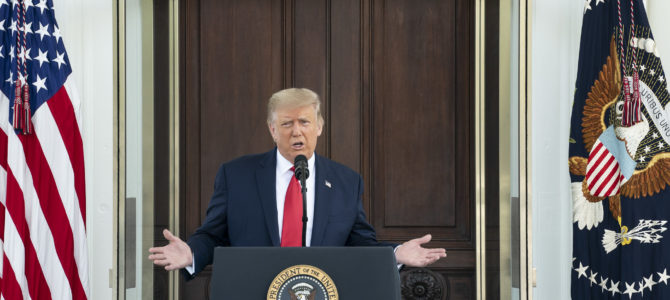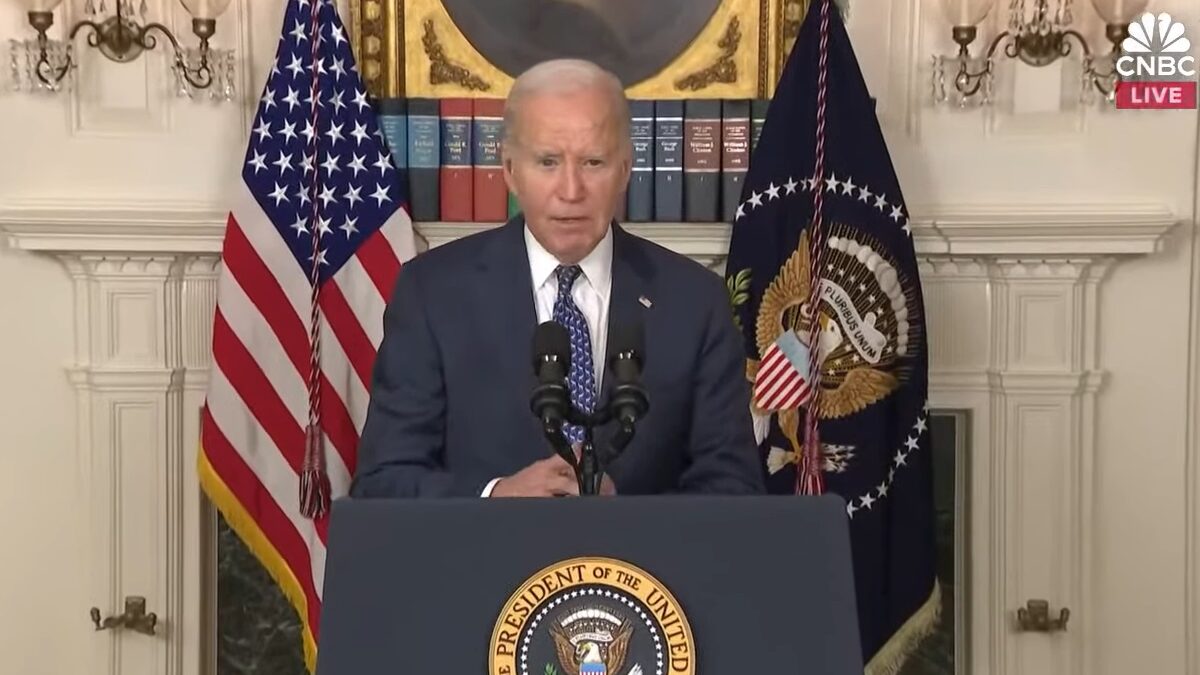
On Thursday, Donald Trump released a seven-point health-care reform plan, likely in response to the criticism he endured after an exchange with Sen. Marco Rubio last Thursday.
Rubio pressed Trump for details about how he would reform health care, beyond repealing Obamacare, and Trump just kept repeating that he would “get rid of the lines around the states,” without elaborating. Asked for more specifics, Trump said he had none.
It would be a stretch to call what Trump released “specifics,” but at least his seven-point plan gives us a clue about how he thinks about health care and what he might try to do in office. A point-by-point analysis of his plan reveals a startling lack of seriousness about what’s wrong with our health-care system, why Obamacare made it worse, and what we need to do to fix it.
Here’s what Trump proposes:
- Completely repeal Obamacare. Our elected representatives must eliminate the individual mandate. No person should be required to buy insurance unless he or she wants to.
So far so good. Like every GOP candidate, Trump wants to repeal Obamacare. Fine.
- Modify existing law that inhibits the sale of health insurance across state lines. As long as the plan purchased complies with state requirements, any vendor ought to be able to offer insurance in any state. By allowing full competition in this market, insurance costs will go down and consumer satisfaction will go up.
This is what got Trump into trouble last Thursday. What he meant by “get rid of the lines around the states,” probably, is that he would try to encourage competition by allowing insurance companies to sell plans in any state regardless of that state’s insurance regulations. It’s a familiar proposal that comes up whenever Republicans talk about repealing Obamacare, but it’s more of a sound bite than a viable policy reform.
Because states regulate health insurance, if an insurance carrier wants to do business in a state its plans must comply with state regulations. It’s not clear that Trump understands this, though, because his proposal states, “As long as the plan purchased complies with state requirements, any vendor ought to be able to offer insurance in any state.” That is already the case. Right now, any health insurance company (like UnitedHealth Group, the nation’s largest insurer) can offer insurance in any state—as long as the plans they offer in that state comply with state regulations.
What people mean when they say individuals should be allowed to “purchase insurance across state lines” is either, A) insurance companies should be able to sell plans in one state under the regulatory regime of another state, or B) the federal government should take over all health insurance regulation and create a single national market.
The former is a non-starter, since no state legislature would ever allow that. As for the latter, a federally regulated national health insurance market could in theory be a good thing, but as Mark Hemingway noted in The Weekly Standard, “An even more likely scenario is that Congress uniformly makes everything worse for everybody. One idea to allow for more insurance competition would be for the federal government to set up some sort of health insurance ‘exchange’ where consumers could buy insurance directly from competing providers… Sound familiar?” Of course it does, that’s Obamacare.
- Allow individuals to fully deduct health insurance premium payments from their tax returns under the current tax system.
This is a fine idea as far as it goes—after all, the unlimited tax deductibility of employer-sponsored coverage is a relic from World War Two price controls. The problem is that simply allowing individuals to deduct premiums from their taxes doesn’t go far enough. The reason Obamacare offers a refundable tax credit, not merely a tax deduction, is that a lot of people can’t afford premiums to begin with. In theory, because refundable tax credits are an up-front payment, individuals can use them to pay for premiums they could not otherwise afford. Obamacare, however, didn’t make the affordability problem go away, it made the problem worse.
That’s why almost every major Obamacare repeal and replace plan (including Rubio’s) has included some form of refundable tax credit for those who don’t have coverage through an employer. Whether this is the best way to ensure coverage is debatable, but almost no one thinks that tax deductibility alone would enable poor Americans to purchase coverage, even if Obamacare were repealed. Without tax credits, the result instead would be that a great many people would “slip through the cracks,” which is precisely what Trump says he wants to avoid.
- Allow individuals to use Health Savings Accounts (HSAs). Contributions into HSAs should be tax-free and should be allowed to accumulate.
This is a great idea that Trump probably got from listening to Dr. Ben Carson, whose health-care reform plan would transform the entire health-care system—in a good way. Health care policy scholar James Capretta has cautioned that large HSAs could mean “the quick demise of employer coverage for tens of millions of Americans,” because employer-sponsored coverage wouldn’t be as attractive for workers or employers under such a scheme.
But de-coupling heath coverage from employment, although disruptive, would in the end create a more competitive system in which patients act more like consumers and competition among providers reveals prices and drives them down. That’s what conservative reformers should be working for in the long run, but it’s not at all clear that Trump realizes the implications of large HSAs on the current system.
- Require price transparency from all health-care providers, especially doctors and health-care organizations like clinics and hospitals.
The desire for price transparency is understandable. As any economist will tell you, you can’t have a market without prices. But because prices in our health-care system are usually hidden, and as Steven Brill’s 2013 Time cover story chronicled, often outrageously high, we have huge costs and almost no competition. No one really knows what anything is worth, and consumers have no way of shopping around (although that is beginning to change with the development of medical apps).
Third-party payers, whether it’s the government or an employer, shield both patients and providers from costs. Since most providers have contractual arrangements with insurance companies to provide services at a discounted rate in exchange for a guaranteed volume of patients, many of them have no idea what the price of an individual procedure or service might be (and even if they did they don’t know how much any given patient would actually pay). The result is that billing and diagnostic codes have replaced simple pricing, and the cost of individual procedures and services are bundled into a patient’s insurance premium, which their employer pays and they never see.
But price transparency as a public policy is trickier than it sounds and, depending on how it’s implemented, could be indistinguishable from government price-fixing or could result in higher prices. As employers shift more costs to patients, and new technologies like telemedicine become more widespread, price transparency could happen organically. But a simple government mandate on providers to post their prices isn’t going to enable the kind of competitive shopping that Trump’s proposal tried to achieve.
- Block-grant Medicaid to the states.
Great idea. Fantastic. So good it’ll make your head spin, I promise you.
- Remove barriers to entry into free markets for drug providers that offer safe, reliable and cheaper products.
What Trump is proposing here is to allow Americans to purchase drugs imported from countries that impose price controls in hopes that it will save money. It’s an old idea that wouldn’t address any of the primary factors driving up drug prices and also wouldn’t lower the cost of drugs. As Scott Gottlieb explained recently at Forbes, any proposal to lower drug costs would need to include a plan to reform FDA rules, government price-fixing programs for Medicaid and Medicare, and reforming the market for generic and branded drugs.
So, to sum up Trump’s seven-point health care plan, points 2, 3, 5, and 7 are either meaningless or bad ideas, point 4 is probably a good idea, point 6 is genuinely great (but not unique to Trump), and point 1, repealing Obamacare, is only a good idea if you replace it with something better.
Based on what Trump has put forth, combined with his past support for government-monopoly health-care programs like the United Kingdom’s, Trump’s cure for American health care might well be worse than the disease.
John is the director of the Center for Health Care Policy at the Texas Public Policy Foundation. Follow him on Twitter.









